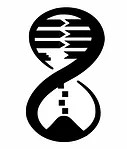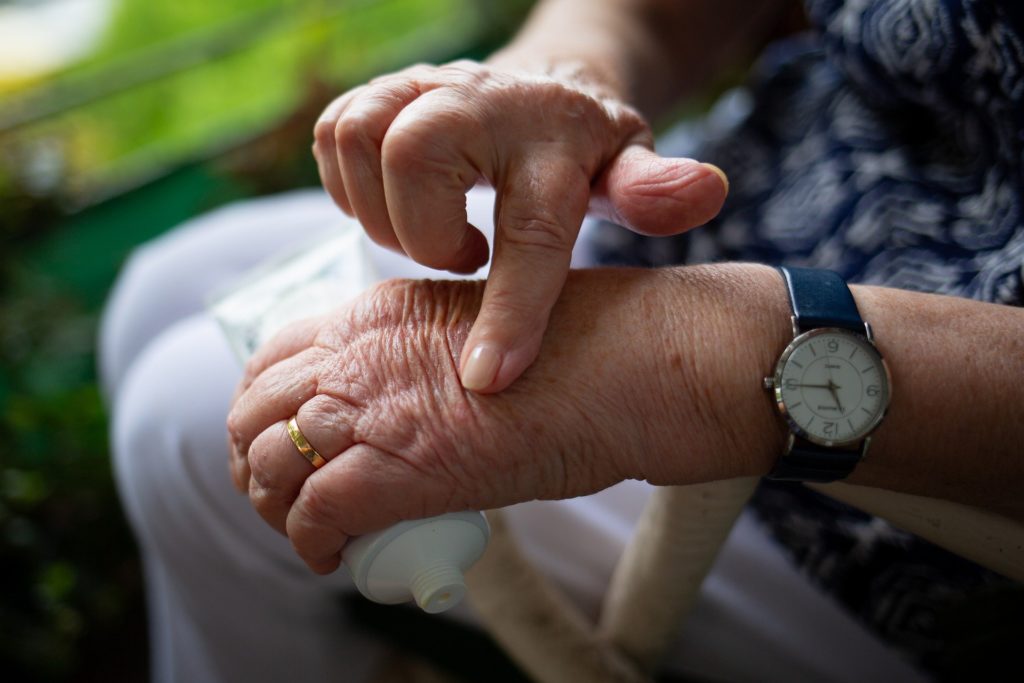The skin is the largest organ of the body and has many roles, such as in:
- Temperature control
- Barrier function
- Protection from injury
According to new research, samples from the skin may also be used to measure your biological age. (1)
Biological age is a measure of a person’s overall position in their life span that takes into account both chronological age, and health status.
It is more accurate than chronological age in predicting a person’s risk of developing chronic diseases or dying, and determining if a person’s aging is ‘healthy’ or ‘unhealthy’. (2)
In a paper published in Clinical Epigenetics, researchers analysed 508 skin samples and showed that molecular changes can be used to measure biological age. (1)
Although several attempts have been made in recent years to measure biological age, most have been inaccurate. (3)
What is biological age?
Chronological age is the number of years since you were born, and is the typical way in which we talk about age.
But chronological age is not always an accurate way of identifying a person’s position in their lifespan. Two people born in the same year may have aged differently, and one might be expected to live longer than the other.
Biological age takes into account both time since birth and any genetic and environmental influences that may speed up or slow down aging. It is an essential measurement for understanding our overall health.
Currently, there are limited ways to measure biological age, but it is expected to become a more active field of research in coming years.
The epigenome
The epigenome is the suite of chemicals that turn genes on and off, for example, by methylating or ‘tagging’ the DNA. In the present study, the authors looked at the methylation patterns at 2000 sites on the DNA. (1)
A machine-learning algorithm was used to correlate the methylation with biological age.
The researchers found a strong correlation, and were able to predict biological age with a high degree of accuracy of within a few years. (1)
Anti-aging drugs
The researchers also tested several anti-aging compounds on the skin cells, such as rapamycin.
Rapamycin is a large molecule that has been shown to extend lifespan in mice by an average of 14%. (3)
In the present study, rapamycin (non-significantly) reduced the predicted life expectancy of the skin cells, according to the new skin-age clock. Although more research is needed, this contributes to a growing body of work suggesting rapamycin may have life-extension effects in humans. (1)
What does this research mean?
This research is an essential step towards developing anti-aging compounds and for improving public health.
Accurate measurements of true age are needed to verify the effectiveness of new drugs that can extend lifespan. (4)
Today, it is challenging to test possible anti-aging compounds due to the lack of measuring tools. But accurately measuring age will help us to test whether anti-aging drugs are able to slow our rate of aging.
Rather than waiting for changes in a person’s health to appear over several decades, scientists and clinicians could measure a person’s aging in clinical trials over a shorter period of time.
The ability to accurately measure aging may also benefit public health, once the technology becomes publicly available. As people begin to track their true age over time, it is possible they become motivated to make healthier choices.
A skin test for biological age
Within a few years, the findings of this study could lead to a quick and convenient test of biological age using a skin sample.
While some of us may be excited to learn the status of our health, others may be worried. Regardless, such a test would provide an objective measurement for better understanding how our health is progressing over time.
What factors increase biological age?
Before this technology becomes widely available and we can measure it accurately, there are several factors besides time known to increase biological age. These are:
Genetic diseases, such as Progeria, Werner syndrome, and Downs Syndrome (5)
Inflammatory disorders (6)
Lifestyle factors:such as smoking status and obesity
Infectious diseases (7)
Mood disorders such as depression and bipolar disorder (8, 9)
How can I keep my biological age low?
Besides avoiding the above, there are several proven ways you can keep your biological age low:
- Exercise regularly (10)
- Minimise the number of x-ray procedures (11)
- Avoid UV damage (12)
- Sleep well (13)
- Eat a variety of vegetables (14)
- Reduce red meat intake (15)
- Avoid excessive air pollution (16)
- Maintain strong social connections (17)
These practices will help to keep you healthy as possible, until accurate tests of biological age are widely available.
Conclusion
Biological age is influenced by chronological age, and a person’s health status. It is an important measure to track how a person’s health changes over time. New research indicates that epigenetic markers in skin cells can accurately measure a person’s biological age. If this research is confirmed in subsequent studies, it could represent a valuable step to the development of new anti-aging treatments.
References
1. Boroni, M., Zonari, A., de Oliveira, C.R., Alkatib, K., Cruz, E.A.O., Brace, L.E. and de Carvalho, J.L., 2020. Highly accurate skin-specific methylome analysis algorithm as a platform to screen and validate therapeutics for healthy aging. Clinical Epigenetics, 12(1), pp.1-16.
2. Jones, M.J., Goodman, S.J. and Kobor, M.S., 2015. DNA methylation and healthy human aging. Aging cell, 14(6), pp.924-932.
3. Jylhävä, J., Pedersen, N.L. and Hägg, S., 2017. Biological age predictors. EBioMedicine, 21, pp.29-36.
4. Xia, X., Chen, W., McDermott, J. and Han, J.D.J., 2017. Molecular and phenotypic biomarkers of aging. F1000Research, 6.
5. Brown, W.T., Zebrower, M. and Kieras, F.J., 1985. Progeria, a model disease for the study of accelerated aging. In Molecular biology of aging (pp. 375-396). Springer, Boston, MA.
6. Stepanova, M., Rodriguez, E., Birerdinc, A. and Baranova, A., 2015. Age-independent rise of inflammatory scores may contribute to accelerated aging in multi-morbidity. Oncotarget, 6(3), p.1414.
7. Mamoshina, P., Kochetov, K., Cortese, F., Kovalchuk, A., Aliper, A., Putin, E., Scheibye-Knudsen, M., Cantor, C.R., Skjodt, N.M., Kovalchuk, O. and Zhavoronkov, A., 2019. Blood biochemistry analysis to detect smoking status and quantify accelerated aging in smokers. Scientific reports, 9(1), pp.1-10.
8. Wolkowitz, O.M., Reus, V.I. and Mellon, S.H., 2011. Of sound mind and body: depression, disease, and accelerated aging. Dialogues in clinical neuroscience, 13(1), p.25.
9. Rizzo, L.B., Costa, L.G., Mansur, R.B., Swardfager, W., Belangero, S.I., Grassi-Oliveira, R., McIntyre, R.S., Bauer, M.E. and Brietzke, E., 2014. The theory of bipolar disorder as an illness of accelerated aging: implications for clinical care and research. Neuroscience & Biobehavioral Reviews, 42, pp.157-169.
10. Dikmen, Z.G. and Mender, I., 2018. How can I protect my telomeres and slow aging?. Turkish Journal of Biochemistry, 42(6), pp.587-590.
11. Agarwal, S. and Sohal, R.S., 1996. Relationship between susceptibility to protein oxidation, aging, and maximum life span potential of different species. Experimental gerontology, 31(3), pp.365-372.
12. Panich, U., Sittithumcharee, G., Rathviboon, N. and Jirawatnotai, S., 2016. Ultraviolet radiation-induced skin aging: the role of DNA damage and oxidative stress in epidermal stem cell damage mediated skin aging. Stem cells international, 2016.
13. Mander, B.A., Winer, J.R. and Walker, M.P., 2017. Sleep and human aging. Neuron, 94(1), pp.19-36.
14. Miller, M.G., Thangthaeng, N., Poulose, S.M. and Shukitt-Hale, B., 2017. Role of fruits, nuts, and vegetables in maintaining cognitive health. Experimental gerontology, 94, pp.24-28.
15. Spiller, R.C., 2015. Changing views on diverticular disease: impact of aging, obesity, diet, and microbiota. Neurogastroenterology & Motility, 27(3), pp.305-312.
16. Ward-Caviness, C.K., Nwanaji-Enwerem, J.C., Wolf, K., Wahl, S., Colicino, E., Trevisi, L., Kloog, I., Just, A.C., Vokonas, P., Cyrys, J. and Gieger, C., 2016. Long-term exposure to air pollution is associated with biological aging. Oncotarget, 7(46), p.74510.
17. Epel, E.S. and Lithgow, G.J., 2014. Stress biology and aging mechanisms: toward understanding the deep connection between adaptation to stress and longevity. Journals of Gerontology Series A: Biomedical Sciences and Medical Sciences, 69(Suppl_1), pp.S10-S16.

